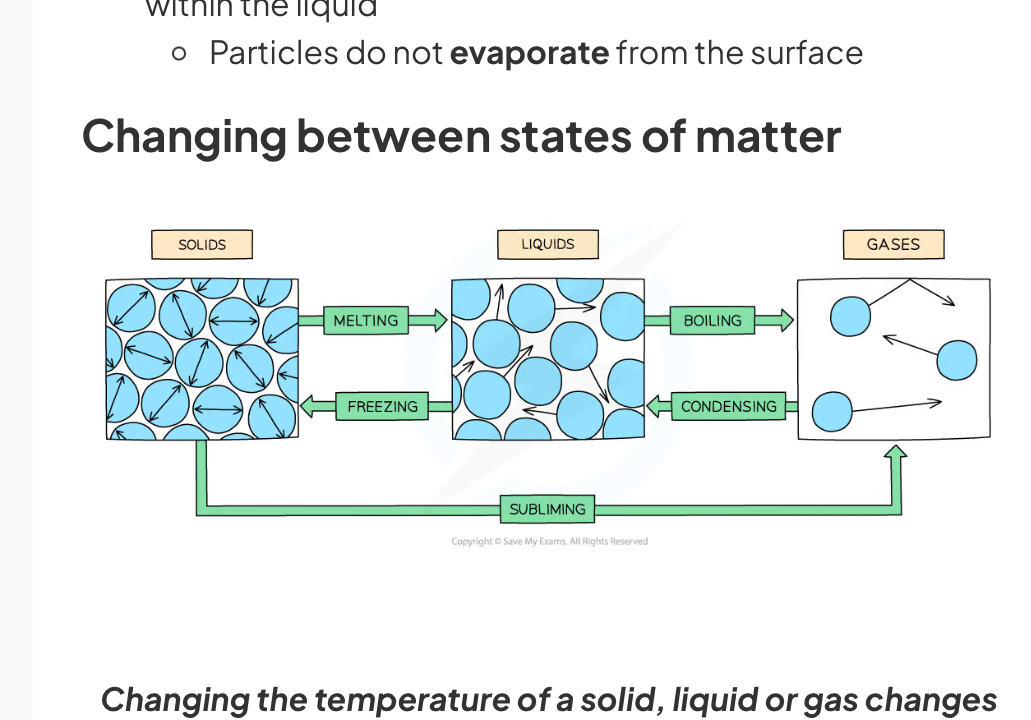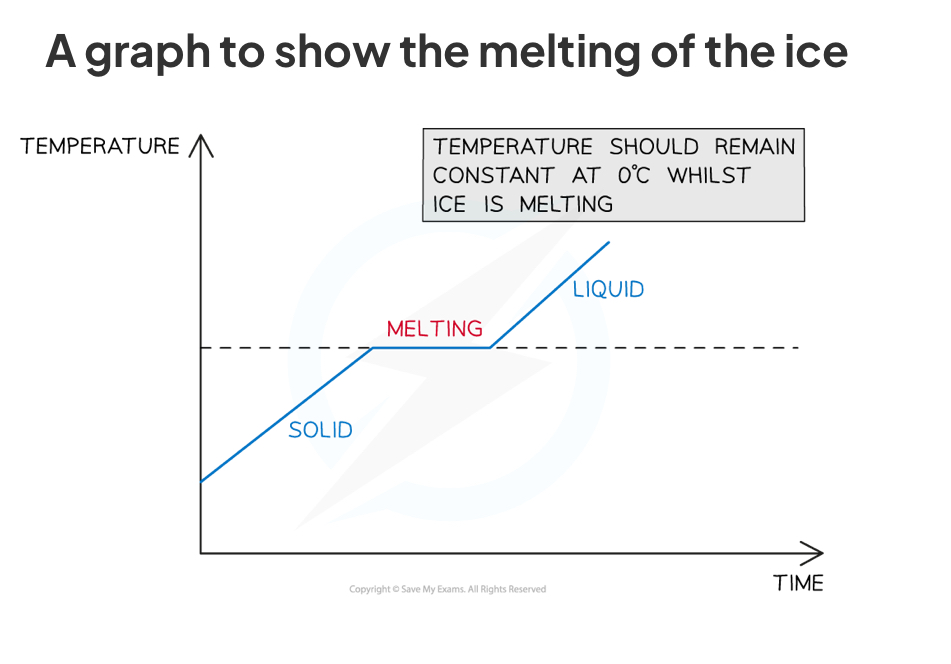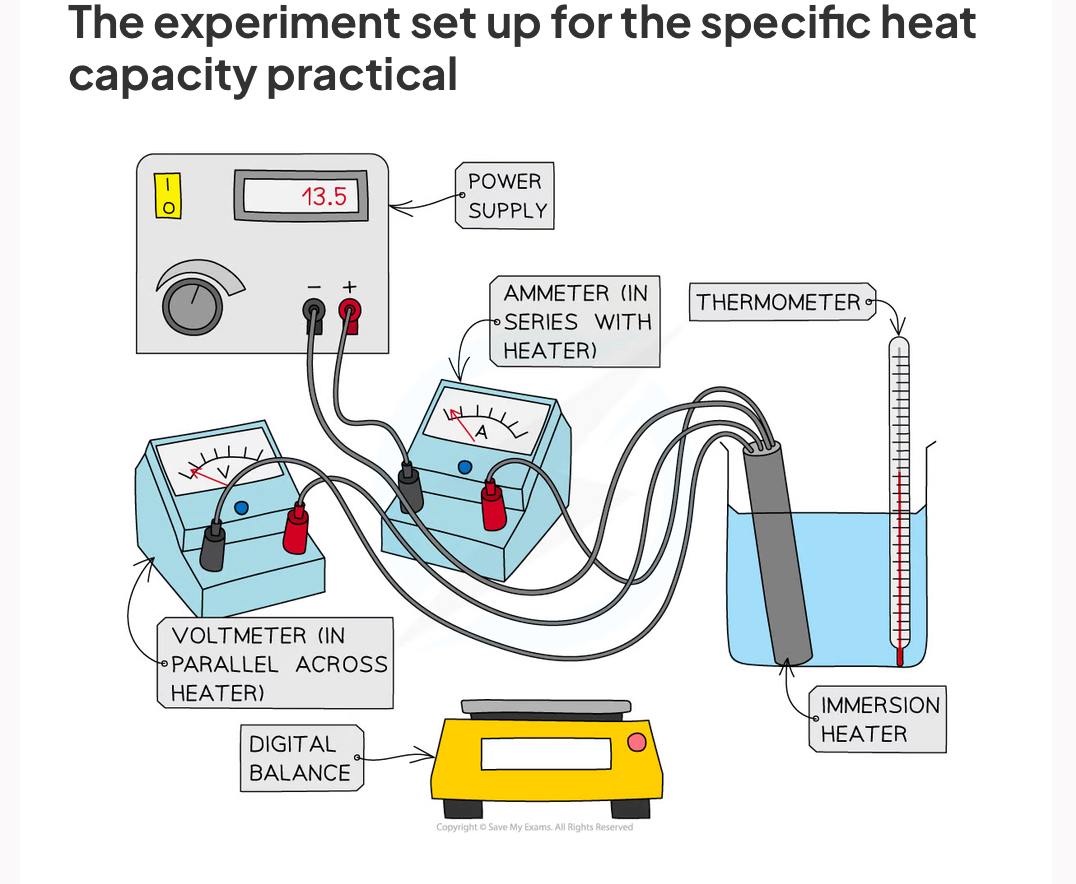physics - waves, forces and motion, radioactivity
1/223
Earn XP
Description and Tags
Name | Mastery | Learn | Test | Matching | Spaced |
|---|
No study sessions yet.
224 Terms
What is density =
Mass/volume (in kg/m³)
What is density definition
The mass per unit volume of a material
Practical : determining density - regular objects
Place the object on a digital balance and note down its mass
Use either the ruler, Vernier callipers or micrometer to measure the object’s dimensions (width, height, length, radius) – the apparatus will depend on the size of the object
Repeat these measurements and take an average of these readings before calculating the density
Practical : determining density - irregular shapes
Place the object on a digital balance and note down its mass
Fill the eureka can with water up to a point just below the spout
Place an empty measuring cylinder below its spout
Carefully lower the object into the eureka can
Measure the volume of the displaced water in the measuring cylinder
Repeat these measurements and take an average before calculating the density
Measuring the density of liquids
Place an empty measuring cylinder on a digital balance and note down the mass
Fill the cylinder with the liquid and note down the volume
Note down the new reading on the digital balance
Repeat these measurements and take an average before calculating the density
What is pressure definition
The concentration of a force or the force per unit area
Pressure (Pa) =
Force (N)/ area (m²)
The pressure at a point in a gas or liquid at rest acts …
Equally in all directions
Pressure difference = (in liquid)
Height x density x gravitational potential energy
Shape of solids, liquids, and gases
Solids :
A definite shape (they are rigid)
A definite volume
Liquids
No definite shape – they are able to flow and will take the shape of a container
A definite volume
Gases
No definite shape – they will take the shape of their container
No fixed volume – if placed in an evacuated container they will expand to fill the container
highly compressible bcs they have large gaps between particles which means it is easier to push then together
Changes of state

What happens when a solid is heated and melts
Thermal energy transfer takes place and supplies the particles in the solid with energy in their kinetic store
This breaks the rigid bonds between the particles meaning they can now flow over each other
What happens when a liquid is heated and evaporates
Thermal energy transfer takes place and supplies the particles on the surface of the liquid with energy in their kinetic store
This removes the bonds between the particles meaning they can move about randomly and spread far apart
Heating a systems will change the energy stored in a system by
Increasing the kinetic energy of its particles = change of state
Practical : temp-time graph - changes of state
Place the ice cubes in the beaker (it should be about half full)
Place the thermometer in the beaker
Place the beaker on the tripod and gauze and slowly start to heat it using the bunsen burner
As the beaker is heated, take regular temperature measurements (e.g. at one minute intervals)
Continue this whilst the substance changes state (from solid to liquid)

Specific heat capacity
Is the energy required to change the temperature of an object by one degree Celsius per kilo of mass (J/kgC)
Change in thermal energy (J) =
Mass (kg) x specific heat capacity (J/kgC) x change in temp (C)
Practical : investigating specific heat capacity
Place the beaker on the digital balance and press 'zero'
Add approximately 250 ml of water and record the mass of the water using the digital balance
Place the immersion heater and thermometer in the water
Connect up the circuit as shown in the diagram, with the ammeter in series with the power supply and immersion heater, and the voltmeter in parallel with the immersion heater
Record the initial temperature of the water at time 0 s
Turn on the power supply, set it at approximately 10 V, and start the stopwatch
Record the voltage from the voltmeter and the current from the ammeter
Continue to record the temperature, voltage and current every 60 seconds for 10 minutes
Repeat steps 2-8, replacing the beaker of water for the solid block of aluminium and starting with recording its mass using the digital balance

Molecules in a gas have random motion and exert a force which means
They exert a force which causes a pressure on the walls of a container bcs as particles move randomly they collide with the walls of their containers = collisions produce net force against walls = gas at high pressure has more frequent collisions and a greater more frequent collisions so higher pressure = higher force exerted per unit area
8 energy stores
Thermal, kinetic, gravitational potential, elastic potential, chemical, magnetic, electrostatic, nuclear
4 energy transfers
By Electricity - electrical current flowing
By Forces (mechanically) - when there is a force acting
By radiation (light or sound) - can only transfer them not store
By Heating - heat is always hot to cold
3 heat transfers
conduction, convection, radiation
what is conduction
energy transferred through material (materials could be insulator or conductor = difference between if something transfers heat slowly or quickly)
what is convection (+ convection current)
happens in fluids - liquids or gases = some pocet of fluid that is heated and particles gain energy and vecome less dense and rise up,get to top, cool then sink because they become more dense = convection current, lids stop
what is radiation
radiation - objects fiving off light, the hotter something is, the more radiation it gives off, differnet materials = good absorbers/emitters + bad absorbers/emitters e.g matt black (good), shiny/white surfaces (bad)
equations for energy : efficiency
effieciency = useful energy/total energy x 100%
equations for energy : work done
work done = energy transferred
equations for energy : work done (how much energy transferred in the distance)
work done = force x distance
equations for energy : kinetic energy
1/2xmxv2
equations for energy : GPE
GPE = mxgxh
equations for energy : power
power = energy/time
thermal energy
kinetic energy
the energy an object has due to its motion
chemical energy
A form of potential energy that is stored in chemical bonds between atoms.
nuclear energy
energy stored in the nucleus of an atom—the energy that holds the nucleus together
gravitational potential energy
Energy stored by objects due to their position above Earth's surface.
elastic potential energy
the potential energy of an object that is stretched or compressed
Magnetic Potential Energy
Energy stored within magnetic fields that can be seen in the attraction or repulsion of objects
examples of Circuit Symbols
circuit diagram
common electrical safety features - fuses
they protect circuits by breaking the circuit when the current exceeds a safe level and they work by a thin wire inside the fuse blows if the current becomes too high ( has to be for specific amps e.g 5A)
common electrical safety features - earthing
directs excess current to ground in case of fault, works by a metal appliance which is connected to the earth wire, preventing the casing from becoming live = no electric shocks
what is current
Electric current in solid metal conductors = the flow of electrons/current = rate of flow of charge (in Amps)
what is voltage
pressure that pushes electricity through an electrical circuit / energy transferred per unit charge passing between two points (volts)
What is resistance?
opposition of a component to the flow of electric current through it (ohms)
what is alternating current
A flow of electric charge that regularly reverses its direction.
Current flow from which terminal to which terminal
Positive to negative
What is direct current
An electric current that flows in only one direction
In the wires, the current is a flow of
Negatively charged electrons
what is the difference between electron flow and conventional current
electron flow is the actual movement of electrons in a circuit and conventional current is the flow of positive charge in a circuit
As electrons flow through a cell they … energy
Gain
As electros flow through a circuit they… energy
Lose
what happens to the current and voltage in a series circuit
current stays same and voltage is shared
what happens to current and voltage in a parrarel circuit
the current is shared and the voltage stays the same
advantage and disadvantage of series circuit
when there are two resistive components in a series the total resistance is
sum of each individual resistance (e.g R1+R2)
when there are two resistive components in a series the current in the series is
is the same through all components - Ohm's law
when there are two resistive components in a series the voltage is
shared between components = Ohm's law for each specific resistor and then add then e.g V1 = current x R1 and then V1 + V2
what are the advantages and disadvantages to parallel circuit
Series circuits fail if one component fails. Parallel circuits maintain the same voltage across each component but current can vary across components. If one component fails in a parallel circuit, the others remain lit. Parallel circuits last longer than series circuits as current is divided across multiple paths.
the flow of current in a resistor results in
energy transfer and an increase in temperature.
IV characteristic of a wire
The current through a wire is directly proportional to the voltage, provided the temperature remains constant. This results in a straight-line graph (Ohmic behavior).
IV characteristic of a resistor
Like a wire, the current through a resistor is directly proportional to the voltage, provided the resistor's temperature is constant. This also results in a straight-line graph (Ohmic behavior).
IV characteristic of a filament lamp
As the voltage increases, the current increases at a decreasing rate. This results in a curve because the filament gets hotter, increasing resistance and deviating from Ohm's Law.
IV characteristic of a diode
A diode allows current to flow in one direction only. In the forward direction, there is negligible current until a threshold voltage is reached, after which the current rises steeply. In the reverse direction, the current is nearly zero.
Investigating IV characteristics experimentally
Set up a circuit with a power supply, a component (e.g., wire, resistor, etc.), an ammeter in series, and a voltmeter in parallel across the component. Gradually increase the voltage using the power supply. Record the current (ammeter) and voltage (voltmeter) at each step. Plot a graph of current (I) against voltage (V) for the component.
Light-Dependent Resistors (LDRs)
An LDR's resistance decreases as light intensity increases.
LDRs explanation
In brighter light, more photons hit the LDR, providing energy to electrons, increasing conductivity and reducing resistance.
LDRs trend
High light intensity: Low resistance. Low light intensity: High resistance.
Thermistors
A thermistor's resistance depends on temperature. For most thermistors (NTCs - Negative Temperature Coefficient), resistance decreases as temperature increases.
Thermistors explanation
At higher temperatures, more electrons gain energy, allowing easier current flow, reducing resistance.
Thermistors trend
High temperature: Low resistance. Low temperature: High resistance.
Applications of LDRs
Used in automatic streetlights and light-sensitive devices.
Applications of thermistors
Used in temperature sensors, such as in thermostats and car engines.
Electrostatic charges formation
Friction between two insulating materials transfers electrons, creating positive and negative charges.
Material gaining electrons
It becomes negatively charged due to an excess of electrons.
Material losing electrons
It becomes positively charged due to a deficiency of electrons.
Friction-based electrostatic charging location
It occurs on insulating materials because conductors allow electrons to flow away.
Example of electrostatic charging by friction
Rubbing a balloon on hair: Balloon gains electrons → negatively charged. Hair loses electrons → positively charged.
Uses of static electricity
Photocopiers, paint sprayers.
Risks of static electricity
Sparks from static discharge can ignite flammable substances.
movement of electrons ( electrostatically)
When a charged object is brought close to a neutral material, the electrons on the neutral material will either move toward the charged object (if it has a positive charge) or away from the charged object (if it has a negative charge).
potential dangers of electrostatic charges
Some dangers posed by static electricity are: Electric shock due to the flow of current through the body, causing a person everything from an uncomfortable zap to falls, burns, or stopping the heart. Fires or explosions due to the ignition of flammable or explosive mixtures.
Density
Alternating Current vs. Direct Current
Differences in electron flow direction and practical applications.
How does the current in a series circuit depend on the applied voltage and the number of other components
As voltage increase, the current also increases and in general, the more components in a circuit = the lower the current
Why would you use a parallel circuit
Components e.g bulbs can be switched off independently and bulbs maintain similar brightness
Why would you use a series circuit
Fewer wires, cheaper and easier to assemble, uses less power
What happens to current when you increase resistance
Increased resistance = decreased current
Ohm's Law for Series Circuits
Total resistance in series circuit is sum of individual resistances: R_total = R1 + R2.
Can lamps and LEDS be used to indicate the presence of current in a circuit
Yes, a lamp can be added to a circuit to check this, if current is flowing, the lamp will light up
Why is current conserved at a junction GCSE
Because charge is always conserved
Series Circuit
A circuit where components are connected in a single path, resulting in the same current flowing through each component.
Ohm's Law
The relationship between voltage, current, and resistance in a circuit, expressed as V = IR, where V is the voltage across the component, I is the current flowing through the component, and R is the resistance of the component.
Voltage Drop
The decrease in voltage across each resistor in a series circuit, determined by the current flowing through the circuit and the resistance of the individual components.
Advantages of Series Circuits
Simple design, easy to understand, all components share current.
Disadvantages of Series Circuits
If one component fails, the entire circuit fails, voltage divides unevenly.
Parallel Circuit
A circuit where components are connected in multiple paths, resulting in the same voltage across each component.
Advantages of Parallel Circuits
If one component fails, others still work, voltage divides evenly.
Disadvantages of Parallel Circuits
More complex design, harder to troubleshoot, more components needed.
Current-Voltage Characteristics
The relationship between the electric current through a circuit, device, or material and the corresponding voltage or potential difference across it, typically represented on a chart or graph.
Non-Linear Circuit Elements
Components such as resistors and filament bulbs that exhibit non-linear relationships between current and voltage, where the resistance changes with temperature.
Diode
A component that has a very high resistance in one direction, allowing current to flow in only one direction.